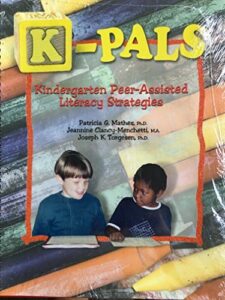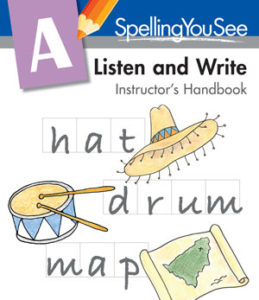Kindergarten Language Arts
Family Literacy and Skills Curriculum Map by Grade Level
Week 1: Homepage with Links to the First Lesson for grades K-3.
Explanation of the Family Literacy and Skills Program.
Each week, there will be three days of skill practice in order to:
Family literacy is available for all grades and reading levels placing an importance on phoneme awareness, phonics and decoding, but then going beyond with syntax, morphology, and semantics. Reading needs a brand new circuit of knowledge and the Family Skills Literacy program can change the thinking through a print and digital adaptive, blended instruction. Each week they will connect the world around them to their own experiences through fluent cognitive awareness.
Family Literacy expands vocabulary by exposing the students to new words and ways they can sound out and find the meaning of words through the science of reading, by increasing their ability to expand their vocabulary, spelling, grammar skills and helping the student be a part of this entire comprehension, systemic approach to literacy.
Family Literacy sharpens the mind through being a part of the entire comprehension and engaging the students’ brains tapping into their critical analysis and empathy to help make judgments and focusing on the importance of messages in a single word and simple phrases so by the end of the year students will have an automatic, fluent, comprehending brain.
Reading and writing are great entertainment and have to be part of this entire comprehensive process. Family Literacy will allow your student to travel to a new world each week connecting their thoughts and feelings. Reading is not only about uncovering new discoveries, but a vehicle to challenge and reflect.
We have the absolute best academic support for early learning, engagement, and mastery. CGA family literacy helps build a sense of self understanding and facilitates evaluation of individual needs. The more a student knows about a word, the quicker the student will read and comprehend words and stories.
Pre-reading program is designed for preschoolers and kindergartners. Your student will enjoy the special games, crafts, and story time read-aloud, and you will love the way your student effortlessly learns essential pre-reading skills. Print Awareness, Phonological Awareness, Letter Knowledge, Listening Comprehension, and Motivation to Read. These skills lay the foundation for learning to read. Learn More
Needs: Teacher Manual, Student Activity Packet, 2 Readers, Interactive kit.
Notes: All About Reading is great for struggling readers, but it can be too repetitive for quick learners. Placement test

KPALS lessons are cyclical and repetitive in format to help younger students hear sounds in words and match sounds to letters. With a parent acting as a coach, every KPALS lesson has two parts; a “soundplay lesson” to build phonological awareness and a “decoding lesson” to help students match sound to letters. Each decoding lesson includes instruction in individual sounds, sight words, and blending short words. Eventually, students put words together to read sentences and paragraphs. Each section of the lesson is repeated for reinforcement and practice. This curriculum is especially good for students who need extra help learning letters, sounds and sight words. Simple for parents, but needs daily consistency. KPALS/PALS + Explode the Code together are a complete curriculum. Either on their own are supplemental.
Get Ready for the Code: Book A is the first book of three preliteracy primers which introduce all consonant letters, and which are designed to be used before the Explode the Code series. Covering early literacy skills and letter formation, students will learn through visual, auditory, and kinesthetic activities that include tracing, matching, tracking, copying, and following directions. Book A teaches students consonants b, f, k, m, r, and t with an emphasis on phonemic awareness and sound-letter correspondence.
Special emphasis is given to discriminating between similar objects and letters, to developing the motor control necessary to write legibly, and to developing the listening skills children need to follow directions carefully. Learn More
KPALS/PALS + Explode the Code together are a complete curriculum. Either on their own are supplemental.
Needs: KPALS, Explode the Code A, B, C and Teachers Guide.


This fun, easy-to-use comprehension program is based on the scientific findings of the National Reading Commission. The colorful, game-like activities engage students through listening, thinking, speaking, and reading.
Fun-Time Phonics!™ teaches students that spoken words are composed of individual sounds (phonemes), and those sounds are written with letters. Armed with this understanding of how print works as a code, reading becomes much easier than other more complicated approaches. This program ensures complete phonemic awareness mastery by focusing on vowel isolation, which is often the most challenging–but most important–part of learning to read. Once students grasp how vowels influence the sound of the consonants and control the meaning of the words, they are only a step away from fluency. Learn More

✦ STUDENT CHOICE! ✦ ✦MOM CHOICE!✦ ✦TOP CURRICULUM!✦
Who it is for: Grades K-12
At a glance: Main curriculum, cross-curricular integration, non-scripted, some worksheets
Moving Beyond the Page curriculum covers state and national standards while providing a unique literature-based approach to learning, hands-on activities, and critical and creative thinking skills. This includes integrated language arts, social studies, and science curriculum that focuses on learning skills through big ideas. Project-based instruction will help students understand complex interactions, see the interconnectedness among people, ideas, and environments, and reinforce real-world applications. This curriculum is specially designed for families that prefer literature-based language instruction.
Each unit includes: Literature, a parent guide, student activity book, and manipulatives
Note: Units can be completed in any order.
This is a complete phonics and language arts curriculum. The “Raceway” theme is very appealing and motivating to children, who love tracking their success via race car around a track as they complete the 36 steps to independent reading. The songs are contagious – children will sing and sing and learn their letter sounds, long and short vowel sounds, blending vowels and consonants, and digraphs almost effortlessly – and enjoy it! The 17 phonetic, full-color storybooks cover all 36 steps, providing immediate, rewarding reinforcement for the decoding skill just learned. The games are not just fluff, but real fortification of phonetic skills. The step-by-step instructor’s manual provides easy-to-follow directions for all lessons. It will aid you in understanding/teaching the phonics program – and give you the confidence to do it! Included is a complete, phonetic spelling program dove-tailing with the phonetic constructs being learned and a complete handwriting program (if you use the ball and stick manuscript). Two workbooks include grammar and creative writing as well as letter recognition, sequencing, phonemic awareness, phonics practice, manuscript writing, reading, comprehension, and spelling. Learn More


Foundations teaches children age 4-7 to read real books without guessing or memorizing sight words while developing their writing, spelling, and language skills. In Foundations students gain phonemic awareness, learn to read and write the 74 basic phonograms and increase reading fluency through structured but playful activities. The innovative Rhythm of Handwriting™ method aids students in developing fluid handwriting. Step by step, students grow as readers, moving from phrases to sentences to paragraphs to books. Using evidence-based reading instruction methods, Foundations combines multi-sensory learning with the latest in linguistic research to provide students the best possible foundation for education: strong reading and writing skills. lLearn More
Comes with: Level A Teachers Manual and Student Workbook, Doodling Dragons, Phonogram and Spelling Rule Quick Reference (cursive or manuscript), Rhythm of Handwriting Quick Reference Chart (for cursive only), Rhythm of Handwriting Tactile Cards, (cursive or manuscript, optional for K only), Phonogram Game Cards-2 sets,
Basic Phonogram Flash Cards, Phonogram Game Tiles, Spelling Analysis Card
Notes: Logic of English is a very solid phonics foundation that is multi-sensory in nature. It is parent intensive. Help Me Choose link

Makes learning to read interesting and engaging for kids, with great online reading games and activities. Children love the games, songs, golden eggs and other rewards which, along with feeling proud of their reading, really motivate children to keep exploring and learning. Learn More

RazKids provides online instruction that automatically adapts to the specific learning needs of every student. Teaches non readers and early readers critical reading fundamentals, including phonemic awareness, phonics, fluency, and basic vocabulary. Learn More

Is designed for the young student as they move from the Preliterate Stage into the Phonetic Stage of spelling. Focuses on lowercase letter formation, consonants, and short vowels. Moves the student from three-letter words to four-letter and eventually to five-letter words. Includes the focus of each day’s worksheet at the top for easy reference. Contains 36 lessons divided into five parts (A through E). Each part is a day’s lesson and should take no more than ten minutes a day. Features letter boxes to help your child learn sound-to-letter correspondence, a skill needed for reading success. Teaches correct pencil grip and letter formation. Emphasizes the consistent, automatic formation of lowercase letters
While Listen and Write is not a handwriting course, efficient handwriting techniques allow students’ brains to handle these tasks effortlessly and concentrate on more important things, such as sound-to-letter correspondence. This level comes with a handwriting guide for your student. Another fun feature of Listen and Write are the stickers that are included. Your student can find a sticker to match a word from the day’s lesson, or simply choose one as a reward for a job well done. The sticker page includes suggestions on how to use them with the lesson. Learn More
Needs: Instructors Handbook and Student Pack.

Zaner-Bloser Handwriting is a complete handwriting program that can be taught in as little as 15 minutes a day! The Zaner-Bloser style teaches a vertical manuscript alphabet that is made up of only four simple strokes and is similar to the letter forms most widely used in everyday print.
This kindergarten-level workbook focuses on basic manuscript strokes, letters, and numerals. Colorful and engaging exercises begin with simple activities like writing familiar letters and tracing letters and strokes with a finger and pencil. Both upper and lower-case letters are taught along with punctuation marks. Learn More
Directional features include:

D’Nealian Handwriting is the original continuous stroke handwriting program! It’s based on a few simple connecting strokes that children then use to write in cursive.
Four units are included in this workbook: Getting Ready to Write, Writing Numbers, Writing Lower-Case Letters, and Writing Capital Letters. The first unit features pre-writing skill practice in the form of circling pictures that are different, drawing lines, tracing, and other simple fine-motor skills. The other units feature full-page letters for students to trace with their finger, lines with examples to trace with a pencil, and lines with which to write their own letter. Learn More
